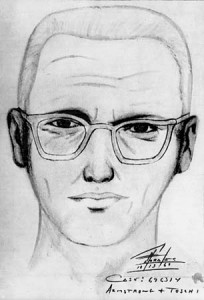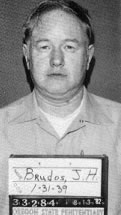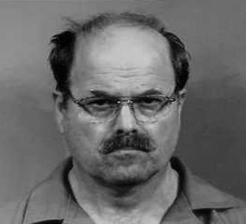Zodiac Killer
The Zodiac Killer was never caught because the law enforcement people in power at the time had used secondary means of catching a first rate criminal. The systems then in place were thought by many to be acceptable to the norms of the time, but criminal minds get away with crimes because their etymology of hate and lust for blood evades the thoughts and behavioral experience of the average policeman from that area in that era. Such law enforcement personnel cannot be expected to grapple with the serial killer type of threat.
The Zodiac Killer is the type of crime that specialized law enforcement agencies were formed to solve. Yet even after decades of forensic evidence and new theoretical modeling systems the Zodiac Killer has never been identified. Yet the improvement of data systems and the records access enjoyed by federal law enforcement today is unparalleled. By changing the approach used to evaluate the Zodiac Killer, a solution may present itself. [Here is an analysis that can clear up why that is].
The Zodiac Killer is thought to have a problem with water. The water comments in the notes indicate there may have been a problem with the killer living in an area that became flooded with water or the ground rose somehow preventing the killer from committing crimes. The Zodiac Killer was operating in a somewhat rural area during an era when options for personal transportation were limited. This could have been an important clue to follow up. Was the water clue a hidden one because in fact the serial killer was not ready to be caught yet?
This may also have meant that the transportation that the killer used was affected by the ground water rising or the conditions of the roads they had to use for access to the killing area was blocked by wet weather conditions.
Isolation of the areas where the killer might have come from might have yielded further information about his home or work. The hours of travel (the killings were always conducted at night) and the roadways open (to single non-freight drivers traveling alone) might have narrowed the search. With the physical description that came later, geographic limitation would have pinpointed more precise data sets to clear using 1960’s and 1970’s methods.
Zodiac Fascinates Public
While many people have thought their relatives or parents might have been the Zodiac Killer, the case remains unsolved. A woman came forward in 2008 claiming her father (adopted) was the Zodiac Killer, but many alleged this was a publicity stunt. The 47-year-old woman claimed to have participated in some way and assisted in writing the infamous Zodiac Killer notes. Zodiac experts are skeptical and continue to scan the data and case histories for a possible solution.
Some members of the public suspect the Zodiac Killer was Ted Kaczynski the Unabomber. Others believe he was simply an insane person deteriorating mentally whose killing spree ended with degeneration in physical abilities or freedom to roam unsupervised. If the Zodiac is still alive, there must be a compelling reason for him to keep his identity a secret, in contrast to the time in the 1970’s when his notes indicated he was on threshold of revealing it.
The killer may have been using an alternate method of transportation not available to him at times when he was not killing or committing murders. The killer may have been intentionally using a car or vehicle that was not his or that he did not have supervised use of in the rain or wet. The killer may have been using the car of someone else, a handy way to avoid people associating the motor vehicle with the person of the description. Access to this transportation (effecting use of cabs or a new car) seems a logical conclusion.
The Car as an Identifier
Cars were generally a good means of identifying and tracking criminals in the 1960’s and 1970’s, due to the fact that roadside stops by police officers tracked the license numbers. The Zodiac may have been aware of this, or even known the policemen local to him. There might be any number of reddish brown haired stocky men in the state, but very few automobiles of a certain color, condition, make and model.
The identification of one man as the probable Zodiac was evidently spurned when it was remarked the man had bought a new car. But why did the Zodiac need to buy a new car? What happened to the suspect’s old car? Was it tainted with evidence or bodies, or had it been part of a botched crime to the extent that the perpetrator had to dispose of it altogether. It may be the case that someone in the Zodiac suspect’s world noticed the use of the car and a change was necessary. Investigation of these cars and where they ended up would be a useful thread to pursue.
The criminology methods should have isolated the times the murders were occurring contrasted against the times the murders were committed and identified what bridgeworks or traffic patterns changed during those times. This might have established some good observation zones for the police to see which types of vehicles the killer might have used to “dogleg” to the murder scenes. While the notes may have implied the Zodiac Killer’s wish to be identified, he actually maintained methods preventing this from happening.
The Zodiac Killer plausibly killed three couples and one cab driver, and the one cab driver that was attributed as a kill by the Zodiac could have been part of his dogleg routine and if the driver made a comment about having recognized him as the killer, or made a remark about his pattern of behavior, or even mentioned seeing him drive a car, the Zodiac Killer would have taken his life to prevent the recognition from being shared or communicated to anybody else.
The San Francisco Connection
In 1968 and 1969 a vicious killer struck down two “lover’s lane” couples, attempting a third. The Zodiac Killer is thought to have murdered a woman, Cheri Jo Bates in Riverside, California in 1966. Why the divergence from the San Francisco area and why the need to isolate the “lust” crimes to the San Francisco environs? What conflicts were present in the killer’s world to make the geography changes seen in the progressively scripted killing modus operandi?
Note the chronological displacement between the crimes. If Cheri Jo was a “warmup” crime, the Zodiac may have expected the killing of one woman to slake his lust for killing. He may have realized after the killing that a man and a woman killed was his preferred scenario. Was the Zodiac Killer the man in the “scenario” himself? Was his own conception or the birth of a child (from a lover’s lane tryst) cementing unacceptable changes in his life he couldn’t deal with?
The couple killings were location specific to the Bay Area, occurring in Vallejo, San Francisco, and Lake Berryessa. Why only three killings? The Zodiac (despite his bluster in the notes) might have feared he was unable to control the killings, as his third couple survived long enough to give details concrete enough to matter in a court of law. The risks the Zodiac Killer may have taken possibly were becoming too great for his limited ability to contain.
The script for the Zodiac killings is a challenging one to solve. There were couples and necking teenagers everywhere, why did these rural spots attract the Zodiac’s rage? Why did a man have to die first with the woman’s molestation and assault coming after? Was there a woman figure of power protected by a male figure within the Zodiac Killer’s immediate world that the murdered couples represented? Why not make the man watch as his wife or girlfriend was raped? There is an element of substitution present in the death order that point to the Zodiac’s motivation and murder/kill reward/release.
Sexual Motives in Zodiac Psychopathology
The identification of San Francisco as a homosexual hotbed directs the analyst’s thoughts to motivation. The social intercourse with homosexuals, the temptation or frustration directed at the self or at a certain individual may have factored into the Zodiac’s killing episodes. The limited number of successful murdered pairs indicates a trigger episode unlocked the fatal combination of Zodiac motivation and action while at large.
The first killing in Riverside in 1966 might have been an experiment with heterosexual longings a man in the homosexual community could not have engaged in or pursued. Was the Zodiac an accepted homosexual? Did he envy the couples engaging in their private snuggling sessions, while his own unassuaged desires went suppressed? Was he in fact a bisexual, dealing with unknown thoughts and desires confusing to him but required to be hidden?
Was the Zodiac Killer sexually confused, thus “proving” himself with the sexual assaults? Was there a man in his life he aspired to get rid of, that the men in the couples killings were supposed to represent? If the Cheri Jo killing was meant to assuage feelings of sexual confusion, perhaps an atmosphere of heterosexual complacency or even attraction was fostered while the Zodiac was in the car with her that he feared enough to Killer to blot out.
Was there a touching off incidence in the Zodiac’s life that secured an immediate blood lust, noticed by the Berryessa victims and reported before they died? The trance the Zodiac went into was a fugue state of emotional and realistic escape from his actual life. Why did the Zodiac Killer need to escape from his life at just these times? Other killings are alleged to have been done by the Zodiac Killer, but without the infamous notes for corroboration, police cannot be sure.
The Notes as Double Blind
The notes formed the basis of chiefly all of the Zodiac information law enforcement officials worked from. Yet this “evidence” was manufactured at the behest of a dangerous criminal! There was no reason to trust any communication that was delivered. The notes may contain various true facts sprinkled with falsehoods, intended to consume police resources and continue the media attention the Zodiac craved. With the cessation of notes being received by media outlets, one might assume the Zodiac Killer was no longer at large or had a medical or physiological limitation preventing him from communicating in this manner.
In all the Zodiac is suspected of killing 5 people and he injured 2 more. The Zodiac in his letters claims to have killed up to 37 people in total.
Article by Roy Whyte . Visit his Google+ page for more.






